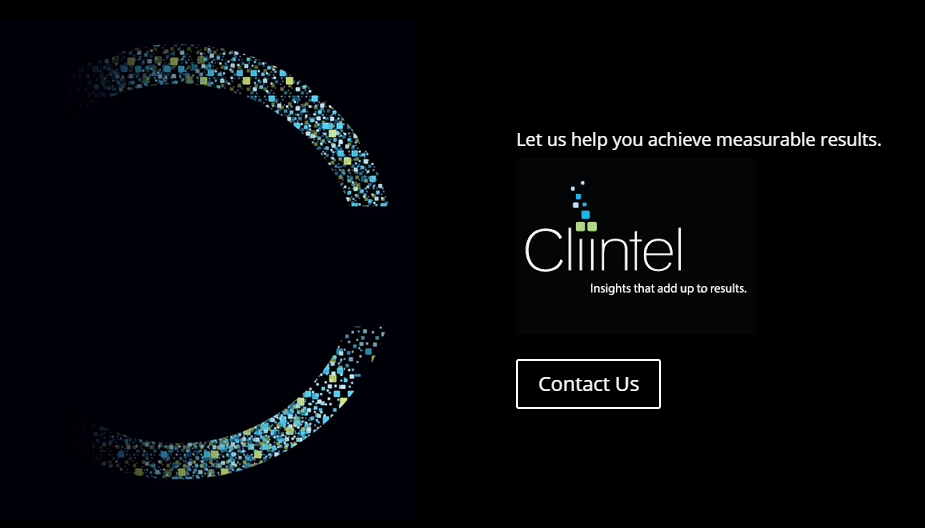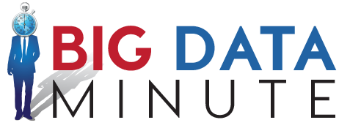
by Stephanie Rabinowotz | Dec 28, 2015 | Big Data, Business Intelligence, Internet of Things
As a child I can remember watching the futuristic life of The Jetson’s on Saturday morning cartoons and thinking “wow that must be a long time from now!” But this is not necessarily the case. With the immersion of Big data and its widespread application, we are beginning to see “The Future” much more quickly than we expected.
Now that Big Data Analytics has been around long enough to no longer think of it as a magical, all knowing, wonder tool, companies are now used to Big Data and understand how to manage it. Big Data has become a mainstream, ordinary process in the work place. With Big Data being more manageable and easy to understand, it is now being applied to many different new and exciting projects. Big Data is being utilized in Artificial Intelligence, Natural Language Processing, and Machine Learning.
Artificial Intelligence is being developed in forms anywhere from robotics to the Internet of Things. Big Data is being heavily utilized in Natural Language Processing to enhance applications such as Apple’s Siri. Natural Language Processing is something we can expect to see a lot of a The Internet of Things continues to make a bigger presence. Machine Learning will make its mark as algorithms continue to be developed to ensure efficiency and minimal human intervention. Between these three sectors we are looking at the world of The Jetson’s being very near.

by Stephanie Rabinowotz | Sep 21, 2015 | Business Intelligence
As presidential candidate, Donald Trump continues to throw out bold statements about controversial topics one must wonder, is he right?
How can I trust him?
Where is he getting this information?
The fact is Trump’s facts are false.
If you look into his statements about immigration and the number of incarcerated illegal immigrants you will find that Trump’s numbers seem to be made up. Trump has quoted recent Homeland Security Reports on the number of immigrants taking up space in our jails…. Homeland Security does not produce reports on these statistics.
Although Donald Trump is excellent in publicizing himself, this is a prime example of how not to use Big Data. Make sure your data is correct before you use it for personal gain. Don’t embarrass yourself like Trump, learn how to understand your data.
Check out how Cliintel can explain your data so you don’t get Trumped.

by Stephanie Rabinowotz | Sep 11, 2015 | Business Intelligence
The scariest thing about change is that many people don’t know they need it. The only way to better yourself or your business is to change! What does change have to do with saving money? If you are asking that question you probably need some sort of change. The questions you should be asking are,
- How can I change my company?
- Who can help me see the changes I need to make?
- Where should I start?
The answer is simple! Cliintel is a business consulting company that works with larger corporations to explain their data and make their production more efficient. In their new booklet, Big Data Tips 1-2-3, Cliintel explains how business optimization through utilizing data can not only save you money, but make a lot of it. Learn how to take your company to the next level by ensuring returning customers and a quality product.

by Rich Benvin | Sep 6, 2015 | Business Intelligence, Case Studies
The broadband marketplace faces constant transformation, attempting to derive as much value as possible from existing infrastructure, while simultaneously adding new products and services. To achieve this the business requires systems that allow routing by service or service combination, matched to the technician skill-set and location. With increased choices, customers have come to demand products and services that are faster, higher quality, and less expensive. Customer loyalty has created a conflict between escalating customer expectations and profit-driven management.
For this purpose one of the largest Multi System Operators (MSO) in the broadband industry sought the assistance of Cliintel to align their workforce management operational support systems.
Focus on the routing group resulted in an increase of two jobs per day that the in-house technicians could complete. In doing so, the market’s dependency upon their contract groups was reduced.
The Client:
The MSO was the nation’s largest provider of cable television, high-speed internet and local telephone service in 14 markets across the country.
The Business Issue:
The Sacramento market has over 40 dispatchers and 300 technicians supporting a market with 350,000+ subscribers. The market utilizes multiple groups of contractors to assist in field installations, service and audit functions. A recent billing system conversion prompted the client to implement CSG’s Workforce Express product to enhance service delivery. The market had limited success in previous implementations of similar projects. The client assigned Cliintel to manage the Sacramento market implementation to increase the probability of success based upon the experience gained in similar markets. Cliintel project managers worked with the Sacramento Management Team to determine where the largest ROI could be achieved, and then to help them achieve it.
The Solution:
Cliintel and the Sacramento Management Team determined that the largest ROI could be achieved by gaining control of the contract groups, as well as their internal technician group. For this project Cliintel utilized their proven implementation methodology referred to as “DART”.
DART is a representation of the four critical areas within a service provider’s Field Operations organization:
- Dispatch
- Administration
- Routing
- Technicians
DART enables all resources working on the implementation project to focus their energies on a specific department while reminding them that there are other departments dependent upon them for success.
Lessons learned from previous implementations had shown that different markets, even though they deliver similar products, have widely varying delivery processes and procedures. Due to the variations, a flexible deployment methodology would be required to increase the adoption of the tool and the resulting return on investment.
During the initial scope meetings, the team determined that the most appropriate manner to approach the implementation would be to focus initially on the Routing group, followed by the Dispatch group, and ending with the service technicians, with the appropriate administrative aspects being handled within these three groups. This approach would satisfy the market’s greatest needs by increasing the client’s control over their contract groups and their internal technician group. In addition, it was believed that by winning over the highly visible Routing group first, the remainder of the groups would align themselves quickly thereafter.
Within the implementation process, even though initial focus was given to the routing group, the technicians were given their new handheld devices at the beginning of the process. That way the technicians could become familiar with the capabilities inherent to the new handheld solution by the time the system was installed.
The Results:
By managing the implementation with a process that allowed for flexibility based upon the client’s needs, the approach maximized the ability of the Sacramento market to succeed. Focus on the Routing group resulted in an increase of two jobs per day for the in-house technicians. In doing so, the market’s dependency upon their contract groups was reduced. The net result was an increase in control on the available work to be done.
Also, since the technicians had familiarized themselves with the handheld devices, they began utilizing the wireless functionality provided by the WFX product before the “turn-up” of the devices. In doing so, the technicians realized that they no longer were dependent upon the existing paper Work Order system. Thus, the technicians helped push the implementation of the project.
Even though the focus of the initial project was on the routers, it was the technicians that took advantage of the implementation. In doing so, it increased the buy-in to the system and ultimately added to the success of the implementation.
We’re proud to help our clients solve tough problems and achieve stunning results. To see what kind of big data results Cliintel.com can deliver for you, please Call 720-200-3001.


by Tara Buck | Aug 7, 2015 | Business Intelligence, Business Optimization
It’s no secret that the amount of data government agencies must store is increasing at a rapid rate- and this growth shows no signs of slowing. But government agencies can’t just build more data centers to house this data – there must be a more efficient and cost-effective solution. In this Q&A, Melanie Stevens, Director, State and Local Government and Education, discusses why all-flash is an important next step in the storage evolution for government agencies.
Q: What is all-flash and why is it important for government agencies to consider? Melanie Stevens: Many government agencies are facing a storage dilemma in their data centers. Their need for storage is growing, but there is insufficient funding to purchase new equipment and limited budget for IT staff, space, power and cooling. Across the data center, we see increasing speed and lower cost in many networking devices, such as servers and switches. However, storage has failed to keep up because of the way mechanical disk works. Capacity and cost have grown, but performance has stayed flat. Because of this, the performance per gigabyte of disk is getting slower. Flash memory is faster, has more space and is much more power efficient than disk. The Pure Storage all-flash storage array meets the availability, reliability and scalability requirements of government agencies. It reduces flash storage to a price point that makes it cost effective for distributed deployments. Our all-flash storage array is cost competitive and more efficient to administer than disk, so it’s a logical next step for government data centers.
Q: What are some of the major challenges all-flash can help government agencies overcome? Melanie Stevens: In the past decade, we’ve seen the widespread adoption of virtualization in the data center. This has had an amazing impact on the efficiency of how state agencies do business. Server consolidation now supports ratios around 20-to-1 per physical server, and that number climbs with every new release of a processor. For government agencies, this means being able to do more with less, and faster. At the same time, virtualization creates its own challenges for storage. Virtualization is only as efficient as the storage on which it runs, and it requires more resources than the pre-virtualization era. This issue is compounded by applications such as virtual desktop infrastructure (VDI), which is commonly used to support kiosks, mobile workforces and online services offered by state agencies. While government agencies have realized ROI from server consolidation, they have to turn around and spend those savings on additional storage. As end users continue to virtualize more applications, disk arrays will only get more expensive and put government agencies further behind in the budget battle. Pure Storage provides the technology that allows government to maximize the benefits of virtualization, without inflated storage costs. So, whether the application is to manage database requirements, virtual desktop or server infrastructure, our all-flashstorage array allows for maximum performance without the usual backend cost.













Recent Comments